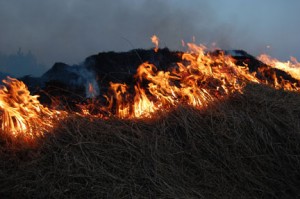Indigenous fire management practices handed down from generation to generation could be the answer to reducing Australia’s catastrophic bushfires, a Darwin fire forum has been told. Source: SBS News
Devastating bushfires in the southern states destroyed millions of hectares of land this season and killed an estimated one billion animals. Australia’s bushfire crisis affected three-quarters of Australia’s population either directly or indirectly.
Indigenous rangers, scientists and policymakers this week gathered in the Northern Territory to discuss fire management and best practices to prevent another bushfire tragedy from happening again.
Senior land ranger for the Tiwi Islands, Willie Rioli, attended the meeting and said he first learnt about fire from elders in the community when he was very young.
“It’s about looking after country and caring for it we hope that the southern states can learn a little bit about what we do here in the north to stop late hot fires,” he said.
“The people up here we’re not afraid of fire, unfortunately you have different climates and weather down south, but it shouldn’t stop you from doing prescribed burning.”
Mosaic burning at the right time of year, around April for the top end of Australia, was the most successful in the region.
The practice involves rangers slowly burning areas in controlled patches, Mr Rioli said.
“Just after the wet when the grass is green, but not too green, that’s what makes the perfect conditions and of course looking at the weather.”
Charles Darwin University Centre for Bushfire researcher Rohan Fisher warns the practice cannot be directly transferred to Australia’s southern states, due to climatic differences.
He said that two key steps would, however, better equip the south.
“The northern fire management is substantially reducing carbon emissions by reducing fires across the north, therefore fighting climate change and the severe climate we’ve seen recently,” he said.
“The other component is the engagement with traditional knowledge and science in developing fire management techniques which has decreased fires like up here in the north.
“An area as large as Germany and one and a half times the size of Victoria has already seen a reduction in the frequency of fires with this method, which Mr Fisher said has been adopted and adapted overseas.
“What is being done in northern Australia is now being exported into Africa and South America… they’re trying to take on these lessons that we learnt and some of the methods and approaches,” he said.
“So just how Africa and South America are learning from northern Australia certainly there’s an opportunity for southern Australia to also learn also.
“By using fire at the right time of year, in the right places with the right people, we have a good chance to help country and climate.”






